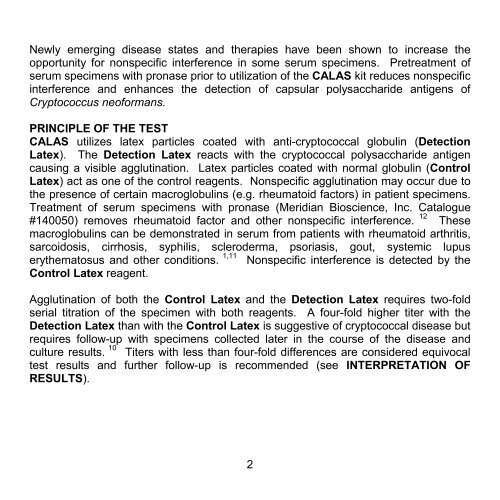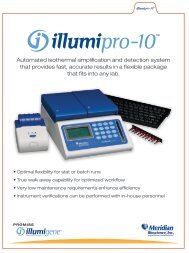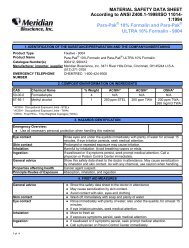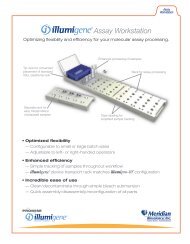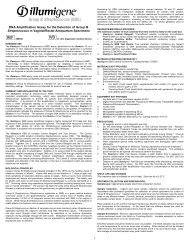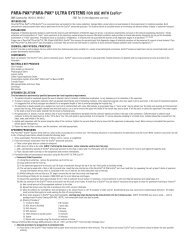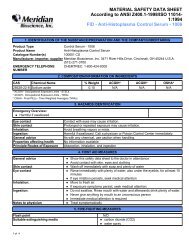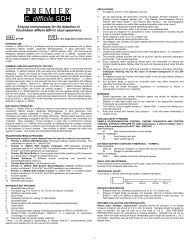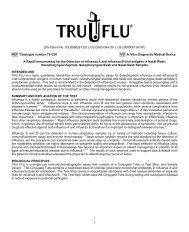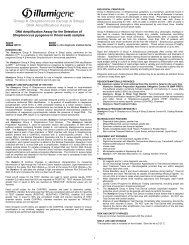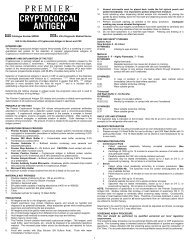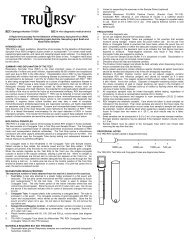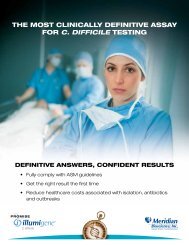Cryptococcal Antigen Latex Agglutination System (CALAS®)
Cryptococcal Antigen Latex Agglutination System (CALAS®)
Cryptococcal Antigen Latex Agglutination System (CALAS®)
You also want an ePaper? Increase the reach of your titles
YUMPU automatically turns print PDFs into web optimized ePapers that Google loves.
Newly emerging disease states and therapies have been shown to increase the<br />
opportunity for nonspecific interference in some serum specimens. Pretreatment of<br />
serum specimens with pronase prior to utilization of the CALAS kit reduces nonspecific<br />
interference and enhances the detection of capsular polysaccharide antigens of<br />
Cryptococcus neoformans.<br />
PRINCIPLE OF THE TEST<br />
CALAS utilizes latex particles coated with anti-cryptococcal globulin (Detection<br />
<strong>Latex</strong>). The Detection <strong>Latex</strong> reacts with the cryptococcal polysaccharide antigen<br />
causing a visible agglutination. <strong>Latex</strong> particles coated with normal globulin (Control<br />
<strong>Latex</strong>) act as one of the control reagents. Nonspecific agglutination may occur due to<br />
the presence of certain macroglobulins (e.g. rheumatoid factors) in patient specimens.<br />
Treatment of serum specimens with pronase (Meridian Bioscience, Inc. Catalogue<br />
#140050) removes rheumatoid factor and other nonspecific interference. 12 These<br />
macroglobulins can be demonstrated in serum from patients with rheumatoid arthritis,<br />
sarcoidosis, cirrhosis, syphilis, scleroderma, psoriasis, gout, systemic lupus<br />
erythematosus and other conditions. 1,11 Nonspecific interference is detected by the<br />
Control <strong>Latex</strong> reagent.<br />
<strong>Agglutination</strong> of both the Control <strong>Latex</strong> and the Detection <strong>Latex</strong> requires two-fold<br />
serial titration of the specimen with both reagents. A four-fold higher titer with the<br />
Detection <strong>Latex</strong> than with the Control <strong>Latex</strong> is suggestive of cryptococcal disease but<br />
requires follow-up with specimens collected later in the course of the disease and<br />
culture results. 10 Titers with less than four-fold differences are considered equivocal<br />
test results and further follow-up is recommended (see INTERPRETATION OF<br />
RESULTS).<br />
2


